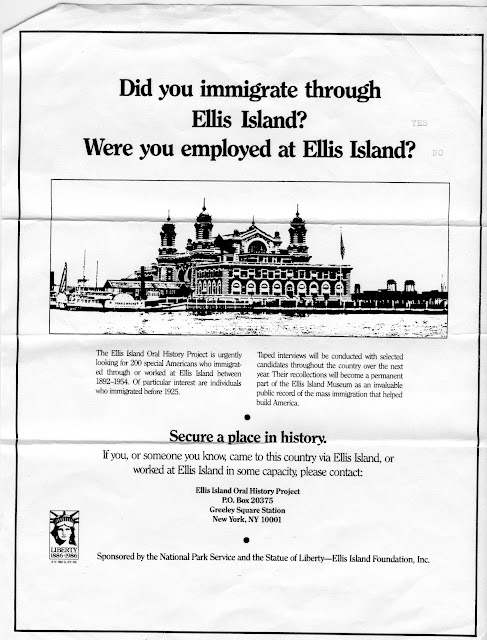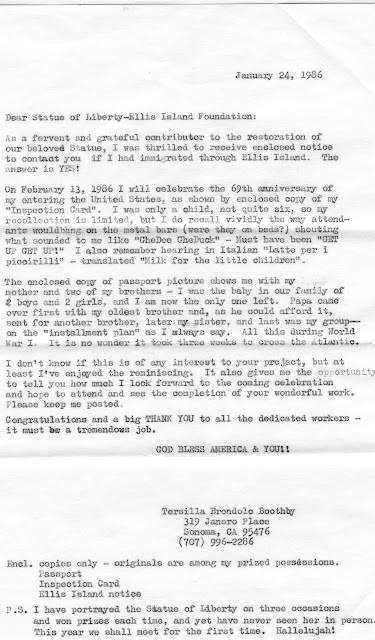Wedding certificates are wonderful ways to find new clues when researching families. The Crawford family not only kept two marriage documents, but recorded family marriages in the Crawford family Bible (see previous posts from January 2024). This was first time I had really looked closely at these wedding certificates.
Their marriage was also documented in the records of St. Paul's Episcopal Church in Philadelphia. They were married by J.A. Roche, Minister. Ancestry.com
This marriage certificate is the oldest original family document I have, and dates from February 23, 1848. It is still in good condition, and the ink has not faded much. The embossing around the edges is beautiful. I have just started researching the Crawford family, who lived in Philadelphia in the early 1800's. I can imagine how it must have been carefully folded up and put in the family bible when the family made their way west.
I found two names listed as witnesses on the certificate. Since I had just gone through the family bible, these names sounded very familiar to me. The first name was Henry Cummings. That name was familiar because John and Sarah's third child was named William Cummings Crawford. Was Cummings originally a maiden name? Who was Henry Cummings and what was his relation to Sarah or John?
The second name was Cristian Byerly. Was this a brother to Sarah? Maybe her father? The spelling of Cristian is interesting also. The Byerly family was originally from Wurttemberg, Germany. Who was this Cristian Byerly? John and Sarah's second child was named George Byerly Crawford. Sarah's maiden name was definitely used for his middle name.
After some sleuthing, I was found a Rebecca Byrley (spelled differently) on Ancestry.com. She had married William Cummings in Philadelphia in 1839. She and William came to Sacramento in 1849. Together, they had 10 children. One child was named Benjamin F. Cummings (keep this name in mind for later....). Could Rebecca be Sarah's sister or another female relation? William's obituary states that his brother was Henry Cummings. Could this be the Henry Cummings that signed the marriage certificate?
The back of this marriage certificate is a bit hard to read, as the ink is fading. It states that the residence of Robert Franklin Hayes was 10 Elgin Park, and he was 26 years old. Sallie Elizabeth Crawford lived at 40 1/2 Zoe Street and was 24 years old. Then, we get to witnesses.....the first witness to the marriage was written as B.F. Cummings, who lived on Kearney Street, San Francisco. I checked the 1880 census, and he did live on Kearney Street, and was a jeweler. He lived with his brother Louis B. Cummings who was also a jeweler. B. F. was none other than Benjamin Franklin Cummings, son of William Cummings, who was married to Rebecca Byerly. By the 1900 census, Benjamin was living with his mother Rebecca, who was born in Pennsylvania, and whose parents were born in Germany. Sarah Byerly was born in Pennsylvania, and her parents were born in Germany (Wurttenburg). I believe Sarah and Rebecca were either sisters or close relatives. Sarah obviously had strong ties to the Cummings family through this marriage.
The next witness on the marriage certificate was K. McCorrick. She lived at 42 1/2 Zoe Street and was probably a family friend. She was found living next to the Crawfords on the 1880 census as Kate McCorrick, and was 19 years old. She lived with her mother.
This is William Cummings' obituary, shared by a Find A Grave contributor:
"Death Summons Comes to Another Pioneer--William Cumming the Latest Victim of the Fell Destroyer--"
"Death continues to knock at the doors of the old Pioneers, with a steady and relentless hand. This morning the fire bell tolled out the news of the death of William Cummings, the pioneer jeweler, who passed away at his residence, on Eighth street, between H and I, at 4:45 A.M. Deceased was born in Philadelphia on March 21st, 1821. He learned the trade of a silversmith and pursued that vocation in Philadelphia and Boston. During the gold excitement of 1849, however, he joined the William Penn Mining Company and came to California, arriving in San Francisco just in time to celebrate the Fourth of July, 1849. After spending a few days at the Bay he came up the Sacramento in a schooner and went to Willow Bar, where he engaged in mining. The William Penn Company soon collapsed, however, and Mr. Cummings came to Sacramento, having but $50 with which to start in life. He formed a partnership with a man named Hastings, and they were in the jewelry business together about two years. Then Mr. Cummings went into the jewelry business for himself at 408 J street, where he remained for eighteen or twenty years. Mr. Cummings was married to Rebecca Byrley, in Philadelphia, in 1839. They had a family of ten children, of whom only three are alive-William, Louis and Benjamin-all of whom are jewelers in San Francisco. Mrs. Cummings still survives. Mr. Cummings retired from business some years ago, having an income that would keep him comfortable. He was a member of the order of Red Men and an Exempt Fireman. He always led an exemplary life, and was a most devoted husband and father, and true friend. He was especially popular with his fellow Pioneer, and one of them said this morning, with tears in his eyes: 'William Cummings was in every respect a good man; I had as great regard for him as though he had been my brother.' Mr. Cummings had been in failing health for some years, but death came suddenly and painlessly at the end. His funeral will take place to-morrow afternoon at 4 o'clock. The Pioneers will assemble at their hall at 3:30 0'clock, and march from there to the Red Men's Hall."
-Sacramento Evening Bee, 15 July 1891
This memorial also links William Cummings to Henry Cummings, 1823-1891 of Philadelphia. He was originally buried at St. Paul's Episcopal Church and later moved to Fernwood Cemetery, along with his wife Catherine Jeffries.
This was written on Rebecca's Find A Grave memorial:
"Rebecca (nee Byrley) and William Cummings were the parents of 10 children. William traveled to California during the summer of 1849 to search for gold, leaving his pregnant wife and 4 young children living in Philadelphia with his younger brother Henry. Rebecca and the children reunited with William in California within the next two years. Eight of her children predeceased Rebecca, as did her husband."
I wondered what brought John Washington Crawford and Sarah Byerly to California all the way from Philadelphia. They were in Sacramento by October of 1856, when Sarah Elizabeth (Sallie) was born. Did they come with Rebecca and her children before that? That would be around 1851, 1852, right after the 1850 census that showed the family still living in Philadelphia. Records show that Henry stayed in Philadelphia the remainder of his life. Did these two families come together? This seems very plausible to me! Of course there are areas that need more research. What was the family connection to St. Paul's Episcopal Church? And who was Cristian Byerly?
Even though women changed their surnames through marriage, many times they passed down their maiden names as middle or first names in their children. The surname Cummings was also used as a middle name, and must have had a special significance to Sarah. Using the marriage certificates, the family bible, and a little sleuthing on genealogy sites I believe I have come up with another branch of this family. They are buried in the Sacramento City Cemetery in Old Sacramento. Time for another visit to the cemetery!
William and Rebecca Cummings are buried in the Sacramento City Cemetery, 1000 Broadway, Sacramento, California.
Find A Grave
John Washington Crawford m. Sarah Byerly
I
Sarah Elizabeth (Sallie) Crawford m. Franklin Hayes
I
Lester Hayes m. Emma Lavinia King
I
Margaret Elizabeth Hayes m. Harold Hansen
I
Margaret Hansen m. Dale Boothby
I
Me




















































